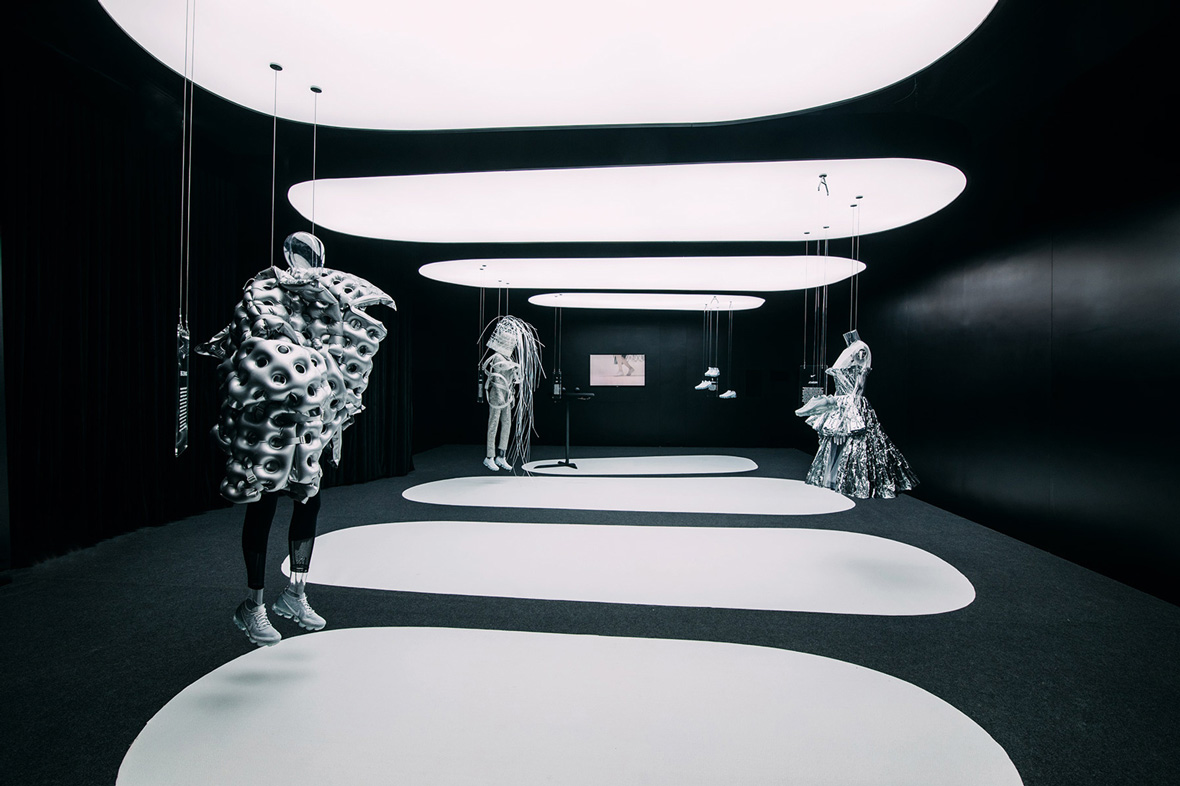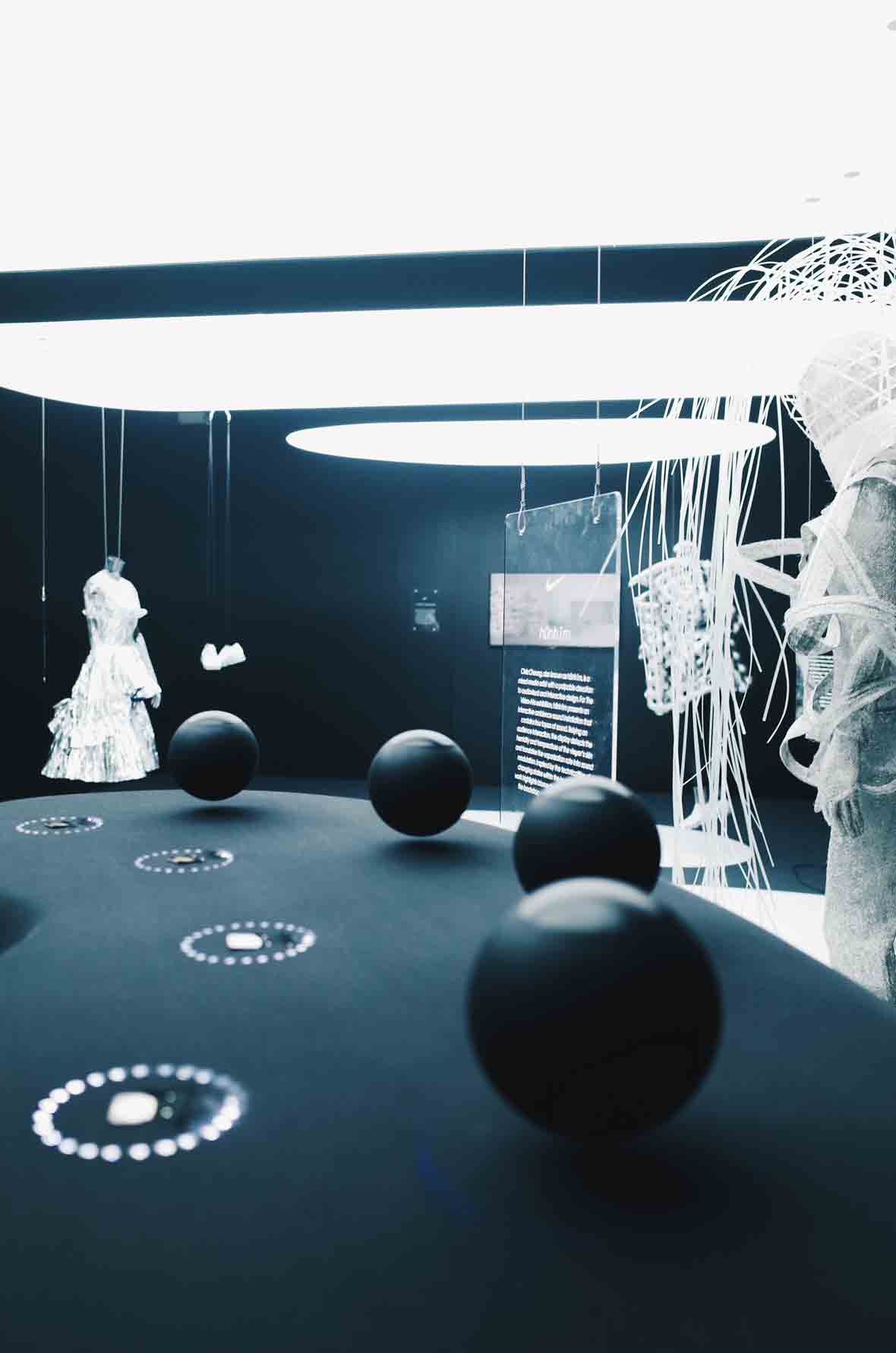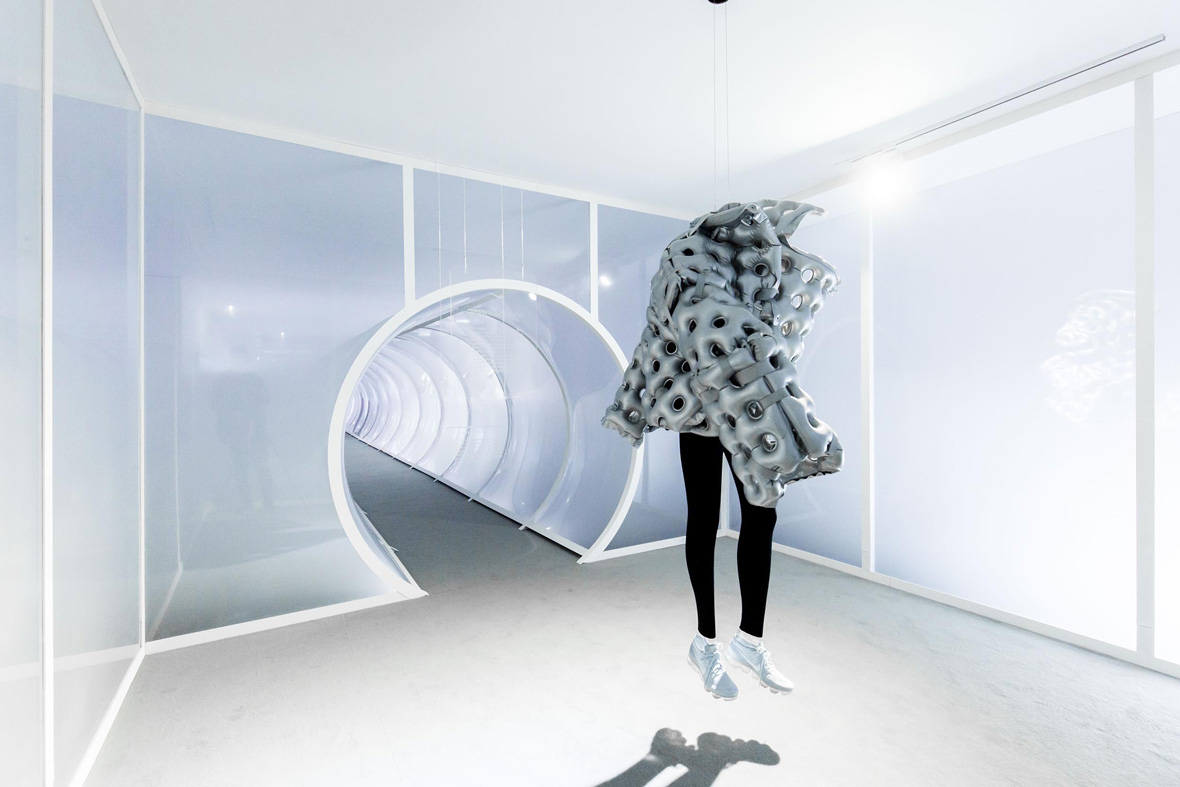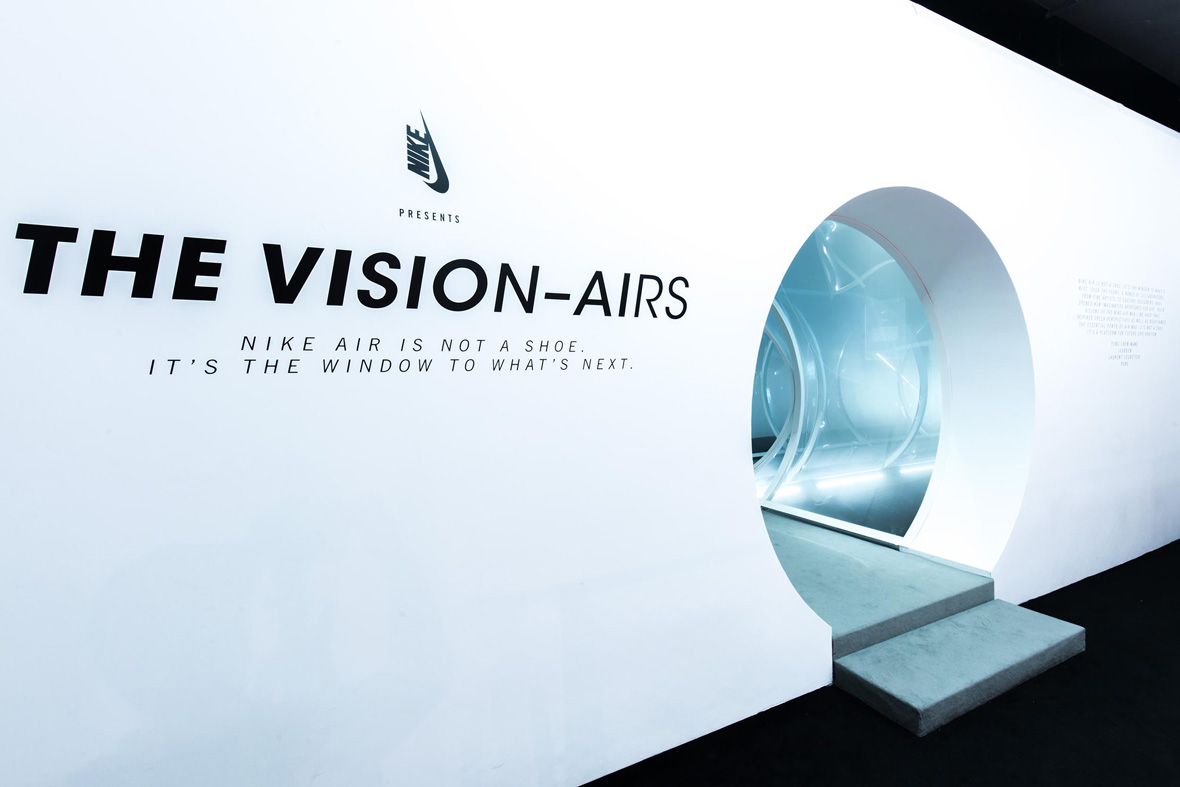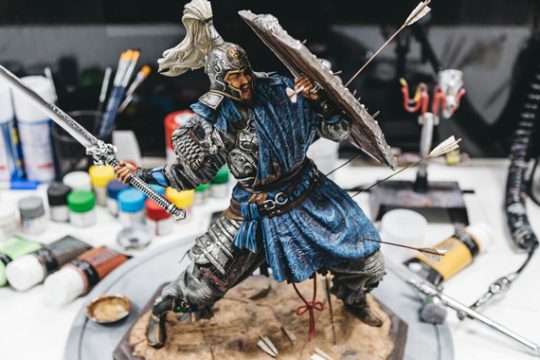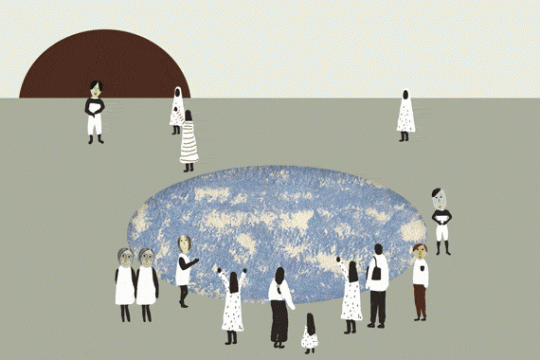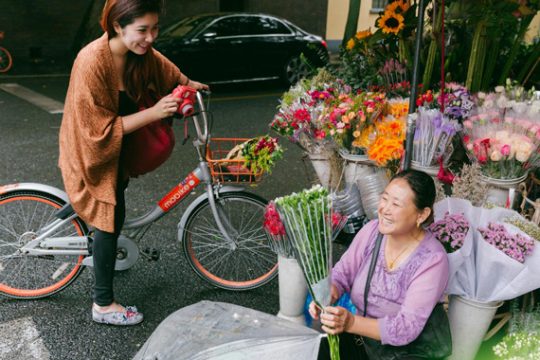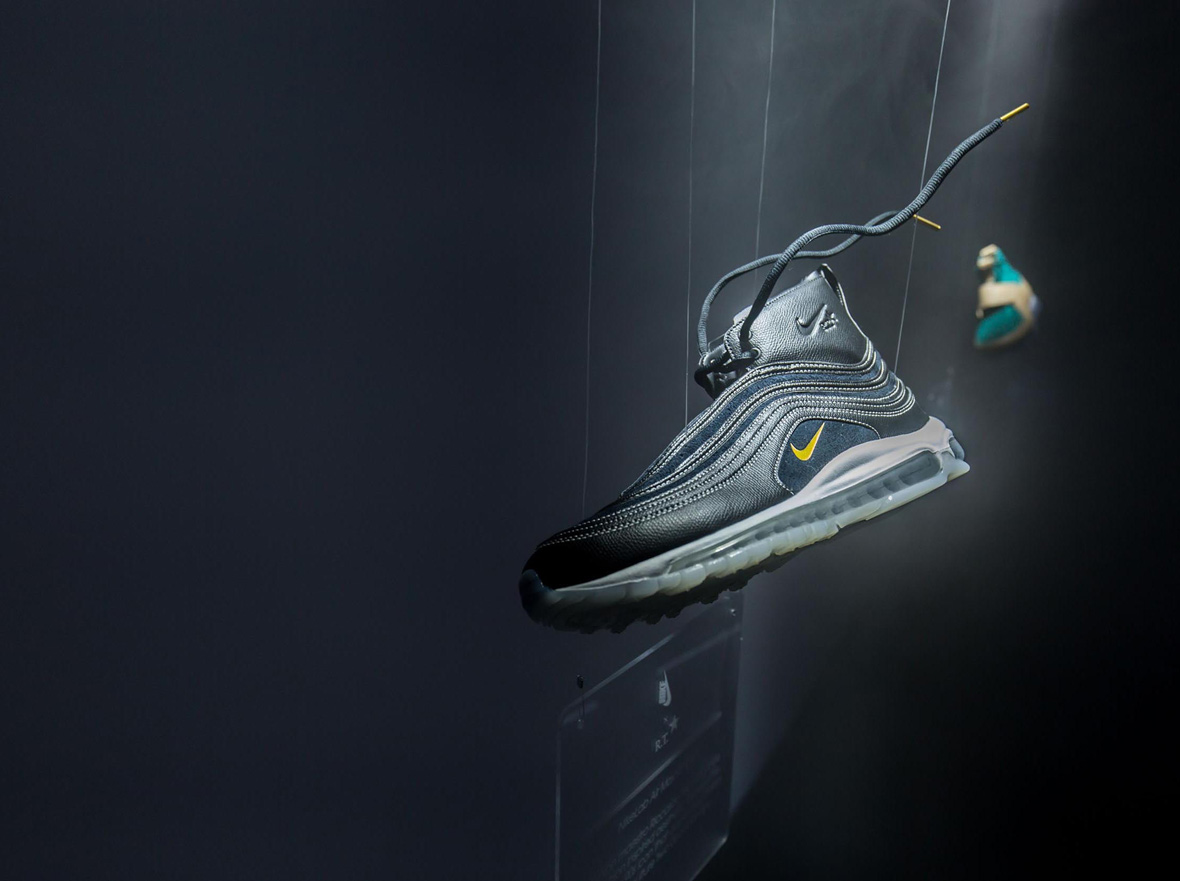
In 1981, Nike hired an architect named Tinker Hatfield to design their Oregon offices. Today, Hatfield is widely regarded as a legend in design – except this prestige isn’t attributed to his architectural work. Observing parallels between architecture and sneakers, Hatfield came up with the idea for a pair of sneakers that revealed the cushioned pouch hidden inside of the sole, a technology that had been introduced back in 1978. Despite initial opposition and doubts, Hatfield’s vision came to life in the form of the Air Max 1 in 1987, a sneaker that went on to become one of the most iconic running shoes of all time.
1981年,Nike邀请建筑师Tinker Hatfield设计位于俄勒冈的办公室。现在,Hatfield被誉为设计天才,却并非因为他的建筑作品。Hatfield观察到建筑与运动鞋之间的相似之处,提出了一个想法:让隐藏在鞋底内的气垫直接显露出来(气垫技术最早出现在 1978年)。尽管Hatfield的这个想法在最初遭遇了很多反对和质疑,但最终在1987年得以实现,并被应用于打造Air Max 1。直至今日,Air Max 1依然是历史上最经典的运动鞋之一。
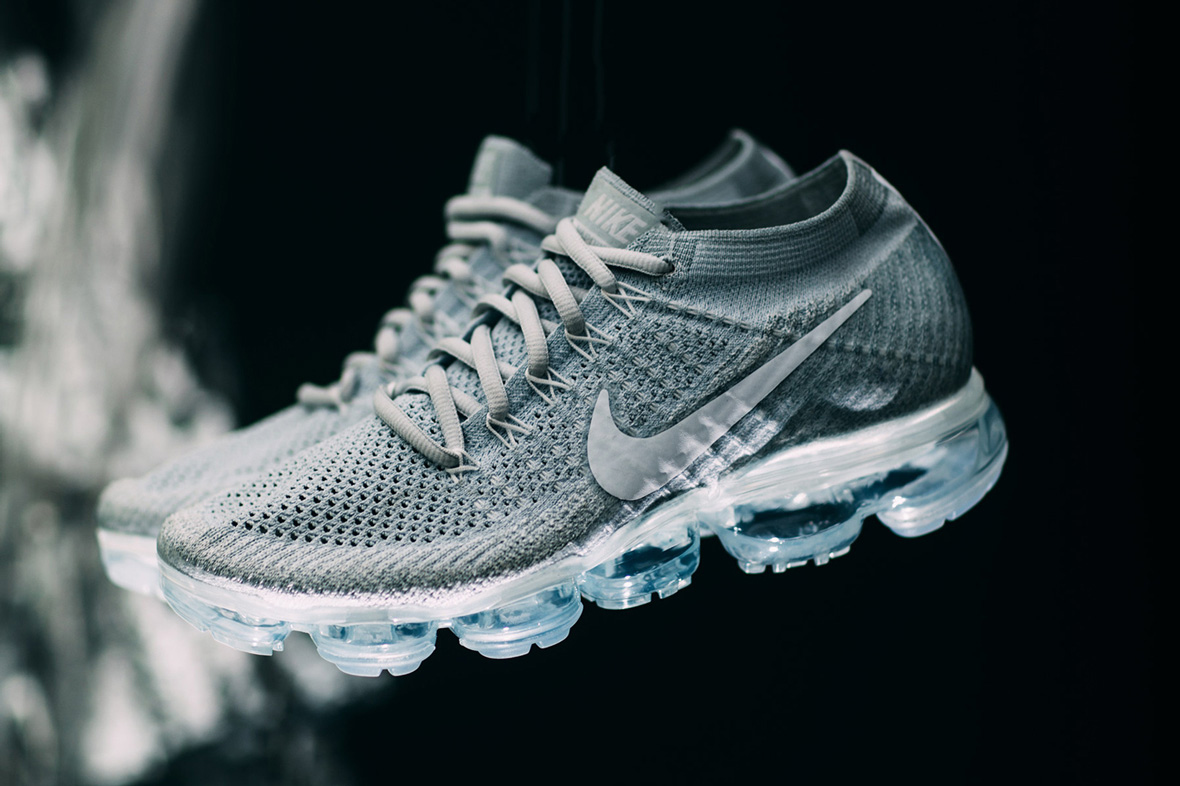
As part of the recent Air Max 30th anniversary, Nike unveiled the next chapter of the Air Max saga – the Nike Air VaporMax – a sleek and futuristic iteration of the Air Max. Built with the knowledge from three decades of experience, the VaporMax strips away the rubber and foam of traditional sneaker soles, leaving only bare cushioning units. To celebrate this new release, and by extension, Hatfield’s innovative spirit, Nike invited a new generation of up-and-coming artists – including many from China, Hong Kong, and Taiwan – to present their vision of the future in an exhibition called The Vision-Airs.
作为Air Max 30周年庆祝活动的一部分,Nike推出Air Max传奇的全新篇章——Nike Air VaporMax。作为最新一代的Air Max运动鞋,VaporMax的设计线条流畅,充满未来感,凝聚品牌30年的气垫运动鞋历史,并抛弃了传统运动鞋鞋底的橡胶和泡沫层,只留下气垫单元。为了庆祝VaporMax的推出,致敬Hatfield的创新精神,Nike举办The Vision-Airs展览,邀请来自中国大陆、香港和台湾的多名新晋艺术家,展示他们眼中的未来。
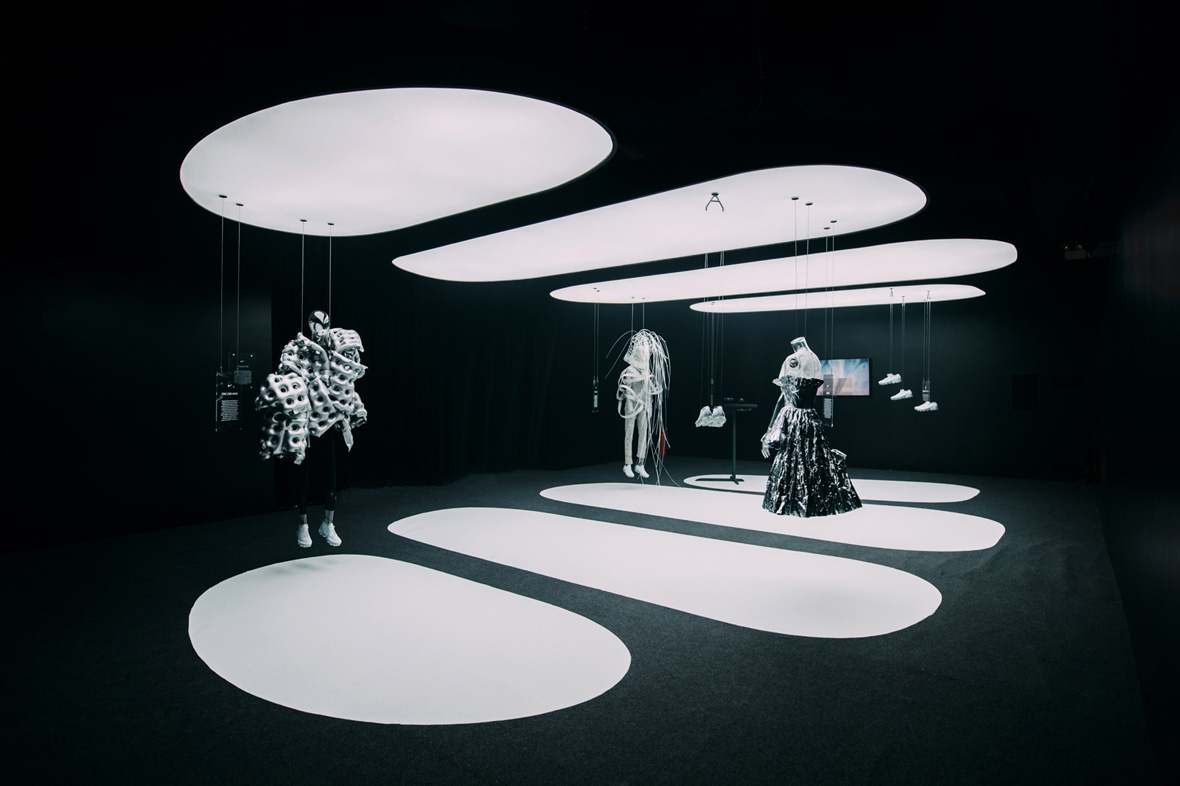
The exhibition made its first appearance at this year’s Art Basel Hong Kong with a showcase of experimental works by talented Asian fashion designers, including Anais Mak of the well-established Hong Kong fashion brand Jourden and numerous emerging Chinese fashion designers such as Fengchen Wang, Wanbing Huang, and Shizhe He. In addition to fashion designers, Nike also invited Hong Kong-based multimedia artist Chris Cheung (aka h0nh1m) to take part in the exhibition. Playing with the concept of vaporization and the idea of the human body being an orchestra, Cheung created “VaporScape,” an interactive installation that detects the room’s humidity and skin temperature of the audience and translates the information into ambient sounds.
The Vision-Airs展览在今年的香港巴塞尔艺术展览会(Art Basel Hong Kong)首次亮相,展示了由才华横溢的亚洲时装设计师打造的实验性作品,包括著名香港时尚品牌Jourden的设计师Anais Mak,以及多名新晋中国时装设计师,如Fengchen Wang,Wanbing Huang和Shizhe He。除了时装设计师,Nike还邀请了香港跨媒体艺术家Chris Cheung(又名 h0nh1m)的参与。Chris Cheung将人体变为管弦乐队,融合蒸汽理念,创造了交互式装置“VaporScape”,通过侦测室内的湿度和观众皮肤的温度,将这些信息转化为音频。
无法观看?前往腾讯视频
As The Vision-Airs concludes in Hong Kong, the Shanghai edition begins. With an equally futuristic aesthetic, the Shanghai exhibition showcases collaborative pieces that weren’t displayed during Art Basel Hong Kong, including collaborations with influential creatives – all of whom are innovators in their respective fields – such as Taiwanese architect and engineer Arthur Huang, Australian industrial designer Marc Newson, and Italian fashion designer Riccardo Tisci.
The Vision-Airs展览在香港落幕后,来到了上海,展览延续同样充满未来感的美学风格,并展示了一些香港巴塞尔艺术展览会上没有展出的作品,其中包括由不同领域的创意人才合力打造的作品,如台湾建筑师和工程师Arthur Huang、澳大利亚工业设计师Marc Newson和意大利时装设计师Riccardo Tisci。
For sneakerheads who didn’t get to drop by the exhibition in Hong Kong, The Vision-Airs is on display at NikeLab X158 until April 13th.
The Vision-Airs展览将于上海X158 NikeLab举办,直至4月13日,错过了香港展览的sneakerheads(球鞋文化热爱者)不妨去参观一下吧!
无法观看?前往优酷

